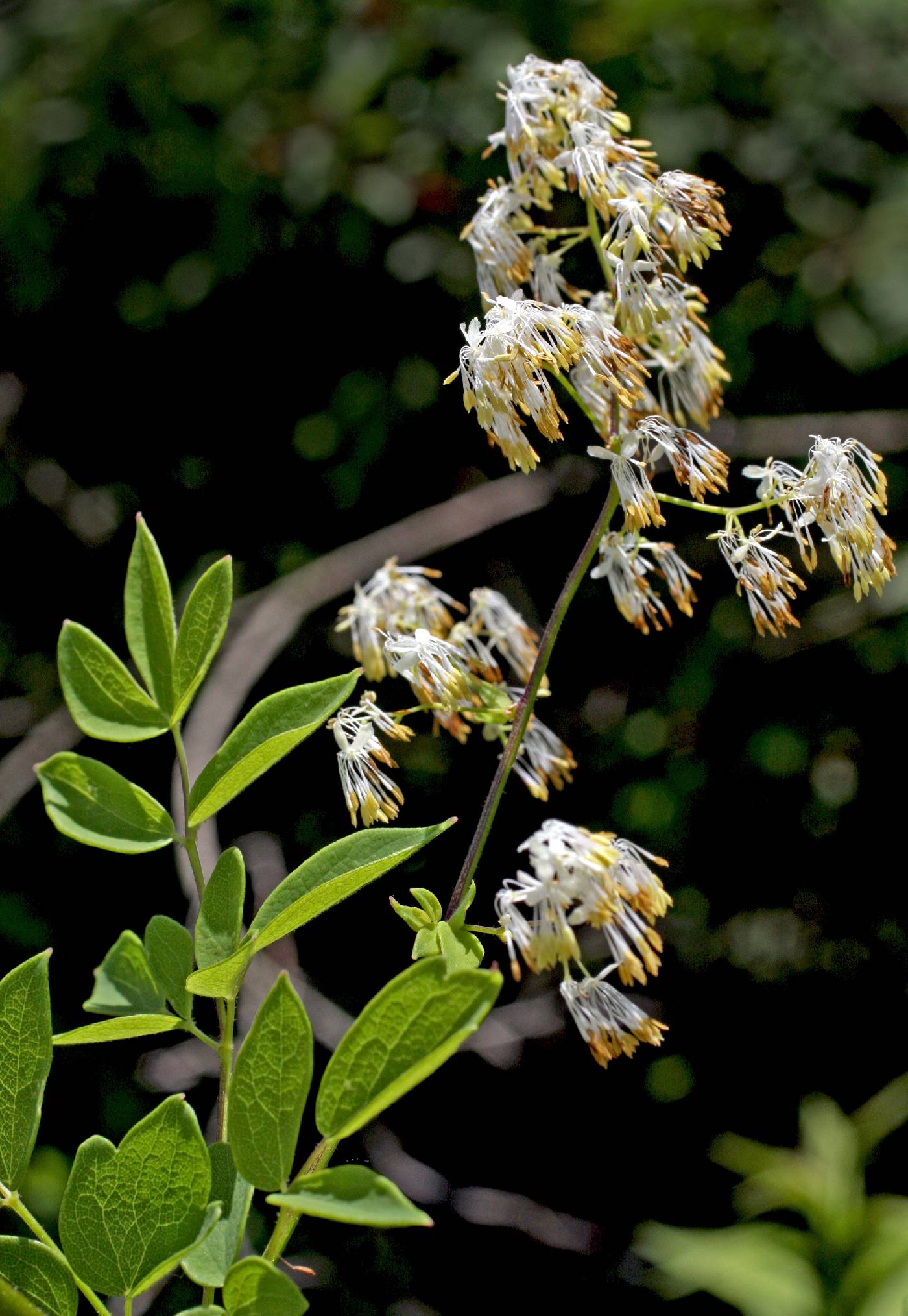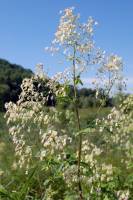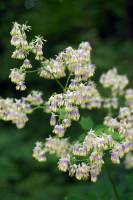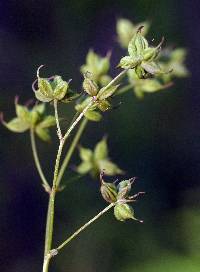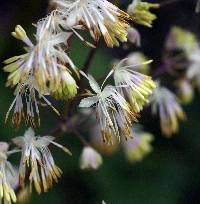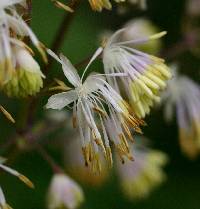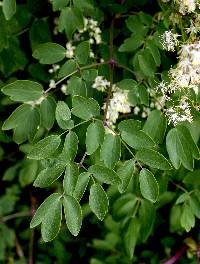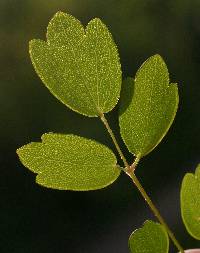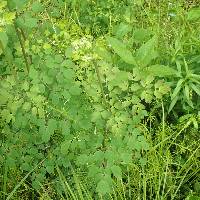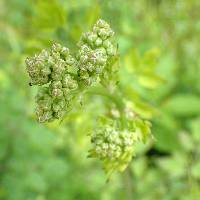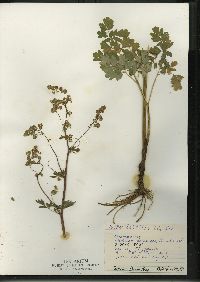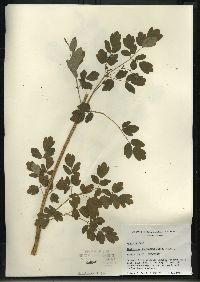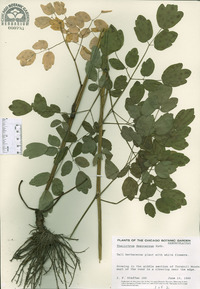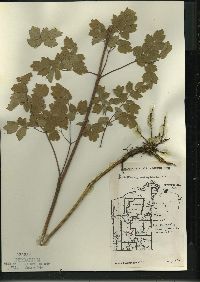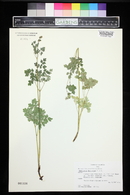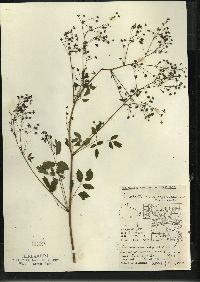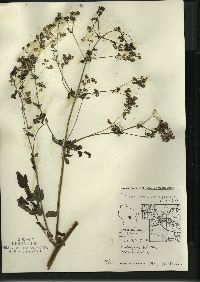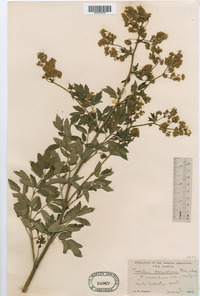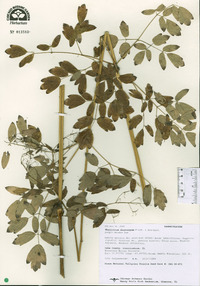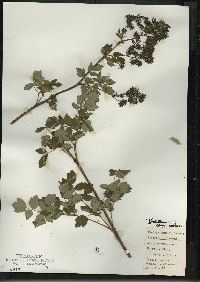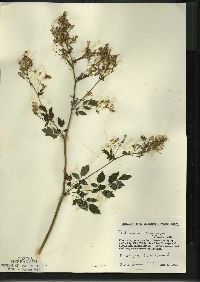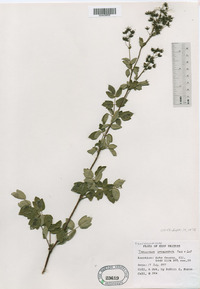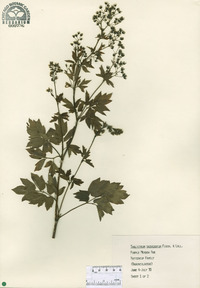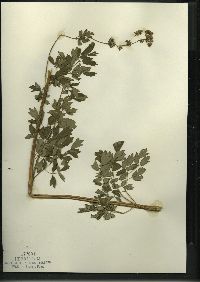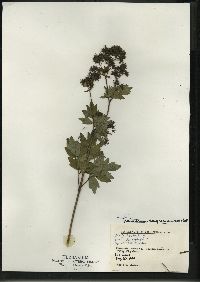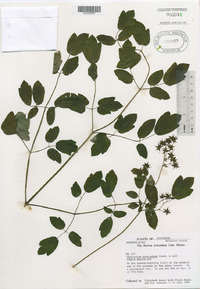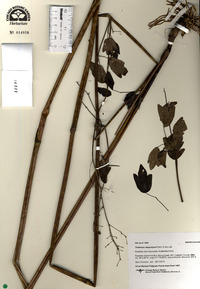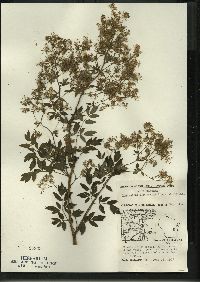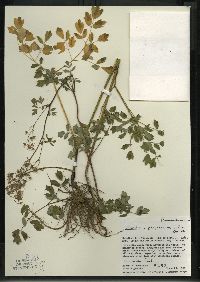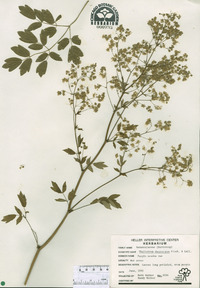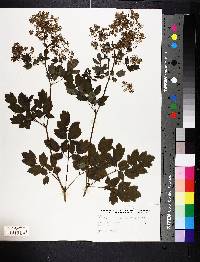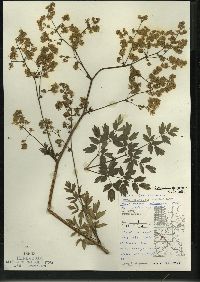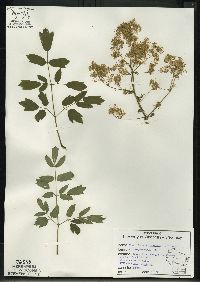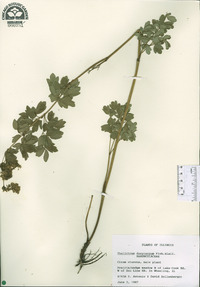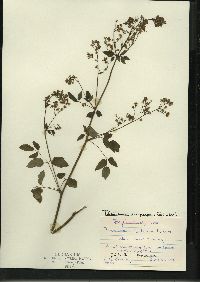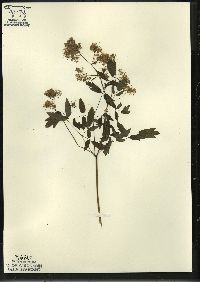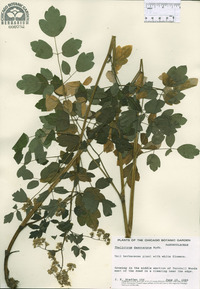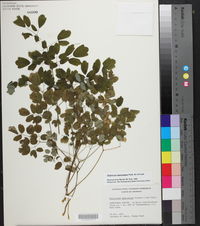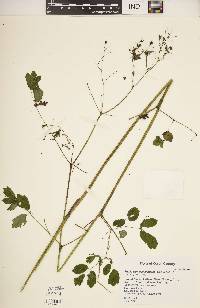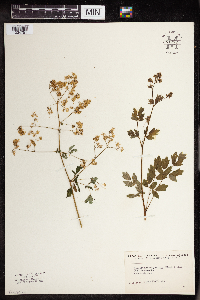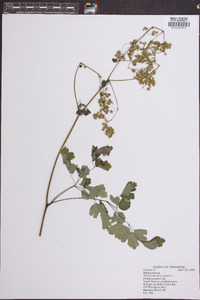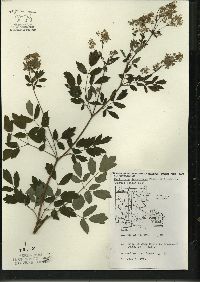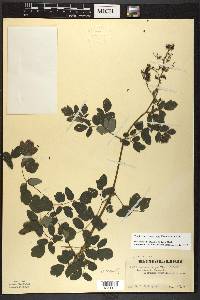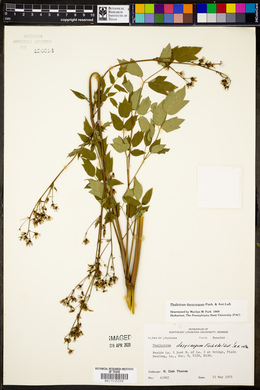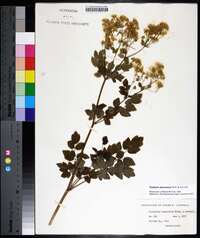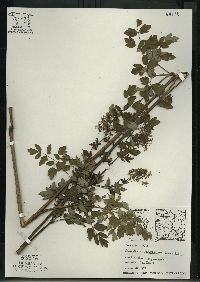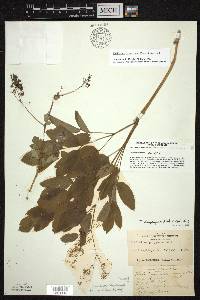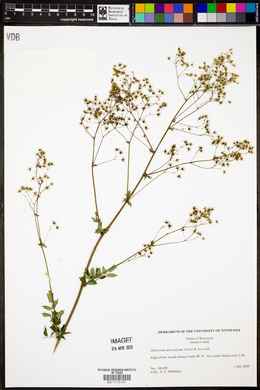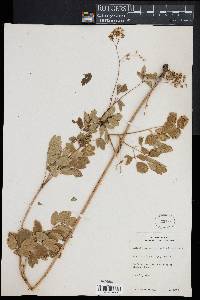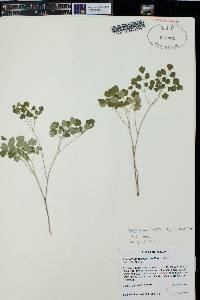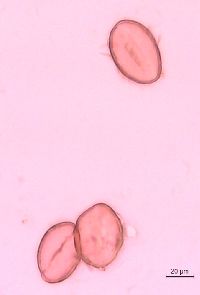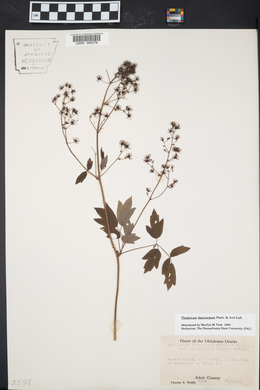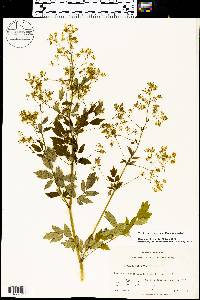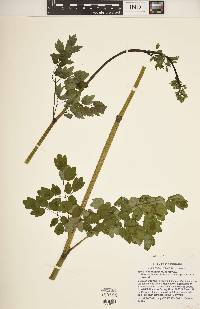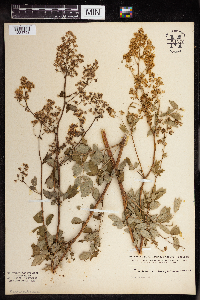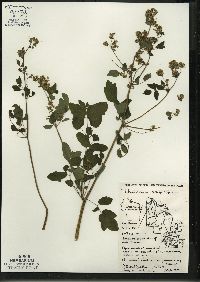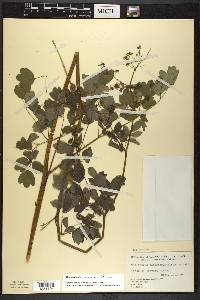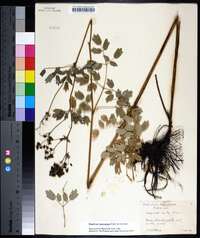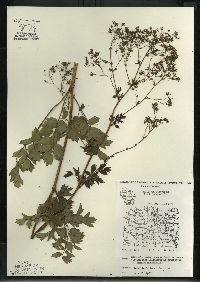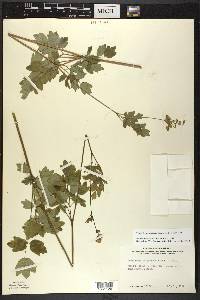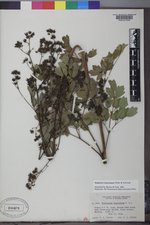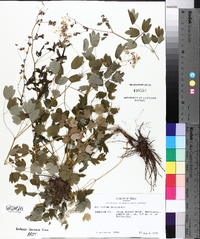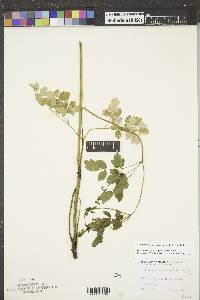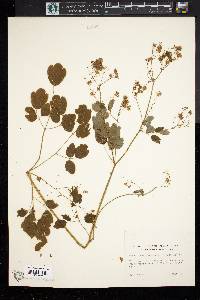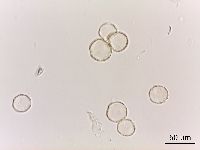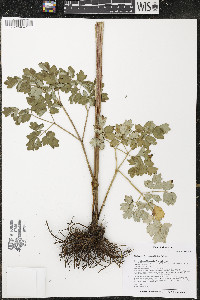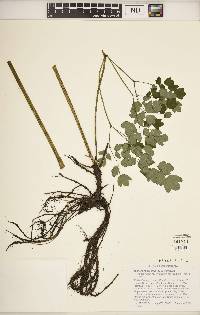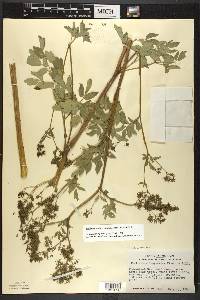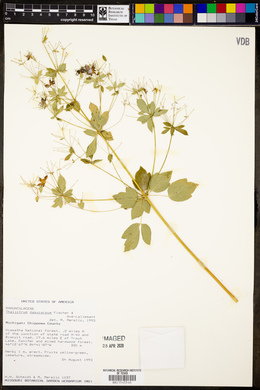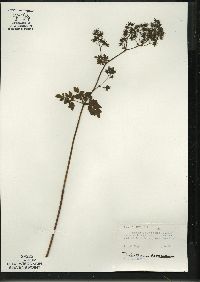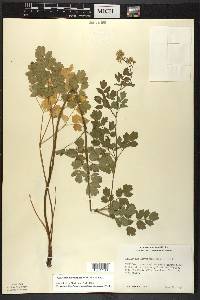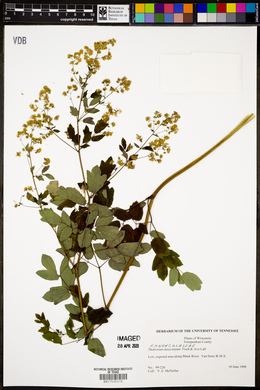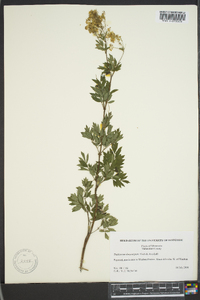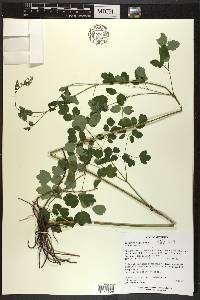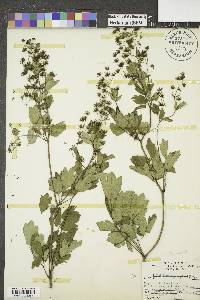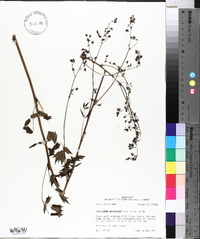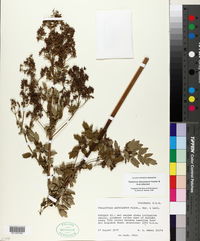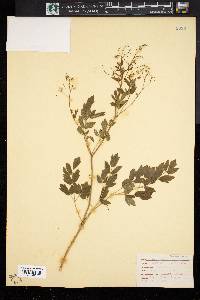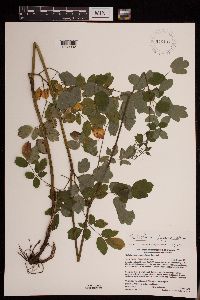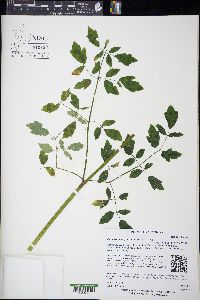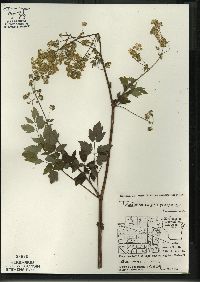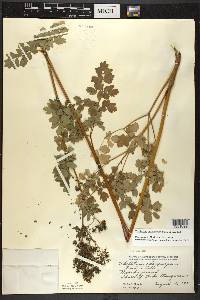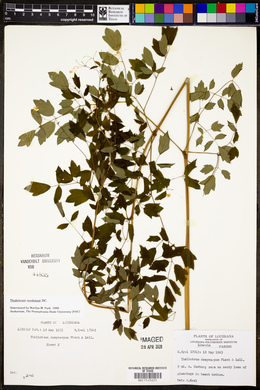Thalictrum dasycarpum
|
|
|
|
Family: Ranunculaceae
Purple Meadow-Rue, more...purple meadowrue
[Thalictrum dasycarpum var. dasycarpum, moreThalictrum dasycarpum var. hypoglaucum (Rydb.) Boivin, Thalictrum hypoglaucum Rydb.] |
Stems erect, stout, 40-150(-200) cm. Leaves chiefly cauline; basal and proximal cauline petiolate, distal cauline leaves sessile or nearly so; petioles and rachises glabrous or occasionally pubescent and/or stipitate-glandular. Leaf blade: basal and proximal cauline 3-5×-ternately compound; leaflets brownish green to dark green or bright green, ovate to cuneate-obovate, apically undivided or 2-3(-5)-lobed, 15-60 × 8-45 mm, length 0.9-2.6 times width, usually leathery with veins prominent abaxially, margins often revolute, lobe margins entire, surfaces abaxially usually pubescent and/or papillose (i.e., with very minute sessile glands). Inflorescences panicles, apically ± acutely pyramidal, many flowered; peduncles and pedicels usually glabrous, rarely pubescent or stipitate-glandular. Flowers usually unisexual, staminate and pistillate on different plants; sepals 4(-6), whitish, lanceolate, 3-5 mm; filaments white to purplish, filiform, scarcely dilated distally, 2-6.5 mm, flexible; anthers 1-3.6(-4) mm, usually strongly apiculate. Achenes numerous, sessile or nearly sessile; stipe 0-1.1 mm; body ovoid to fusiform, 2-4.6 mm, prominently veined, usually pubescent and/or glandular; beak often dehiscent as fruit matures, ± straight, filiform, 1.5-4.7(-6) mm, about as long as achene body. Flowering late spring-summer (May-late Jul). Deciduous, riparian woods, damp thickets, swamps, wet meadows, and prairies; 80-2500 m; Alta., B.C., Man., Ont., Que., Sask., Yukon; Ala., Ariz., Ark., Colo., Idaho, Ill., Ind., Iowa, Kans., Ky., La., Mich., Minn., Miss., Mo., Mont., Nebr., N.Mex., N.Y., N.Dak., Ohio, Okla., Pa., S.Dak., Tenn., Tex., Utah., Wis., Wyo. Thalictrum dasycarpum is a variable species similar to, and possibly intergrading with, T . pubescens . Glabrous variants of T . dasycarpum have been treated as T . dasycarpum var. hypoglaucum . Glabrous and glandular (stipitate and papillate) forms are found throughout the range of the species and occur together in some populations. Native Americans used Thalictrum dasycarpum medicinally to reduce fever, cure cramps, as a stimulant for horses, and as a love charm (D. E. Moerman 1986).
Stems ca 1(-2) m; cauline lvs sessile; lfls mostly 3-lobed and more than 15 mm, distinctly puberulent beneath, or in western plants occasionally glabrous; infl ±pyramidal and pointed; sep 3-5 mm, ±lanceolate and acute; filaments white, capillary or slightly dilated above, not constricted at the tip; anthers linear, 1.5-3.5 mm, sharply apiculate; stigmas ±straight, 2-4.5 mm (mostly over 3 mm in fr); achenes 4-6 mm, obtuse at the sessile or subsessile base; outermost achenes widely spreading or somewhat deflexed, the head of achenes therefore ±hemispherical; 2n=168. Wet meadows, shores, and streambanks; sw. Ont. to Alta. and Wash., s. to O., Ind., Mo., Okla., and Ariz. June, July. The glabrous phase has been called var. hypoglaucum (Rydb.) Boivin. Gleason, Henry A. & Cronquist, Arthur J. 1991. Manual of vascular plants of northeastern United States and adjacent Canada. lxxv + 910 pp. ©The New York Botanical Garden. All rights reserved. Used by permission. From Flora of Indiana (1940) by Charles C. Deam Infrequent to frequent throughout the state in moist or wet places. It is found mostly in bogs and springy places about lakes and in low places in woods and moist places along roadsides. Some of my specimens of this species had yellow roots when collected. This species shows a wide range in the texture, size, and shape of the leaflets and I think it is also a complex. The lower surface of the leaflets varies from glabrous to densely pubescent. I found a staminate specimen in Noble County that had a lavender inflorescence. …… Indiana Coefficient of Conservatism: C = 4 Wetland Indicator Status: FACW |
|
|
|

